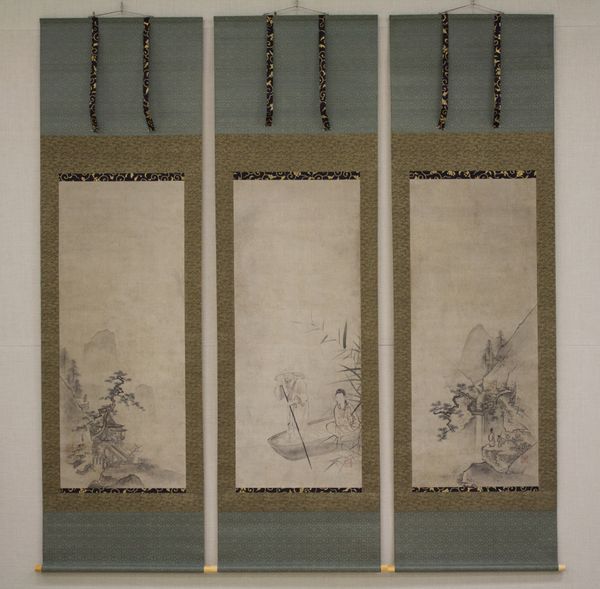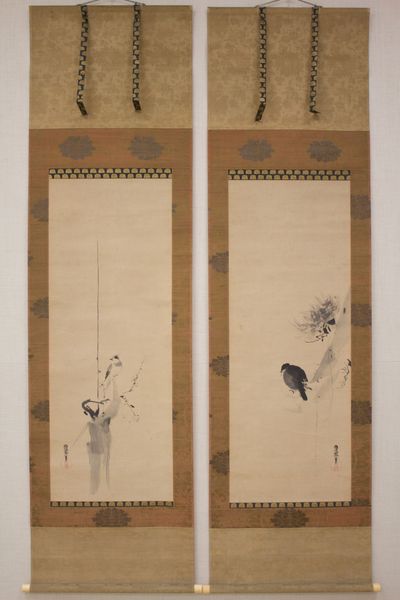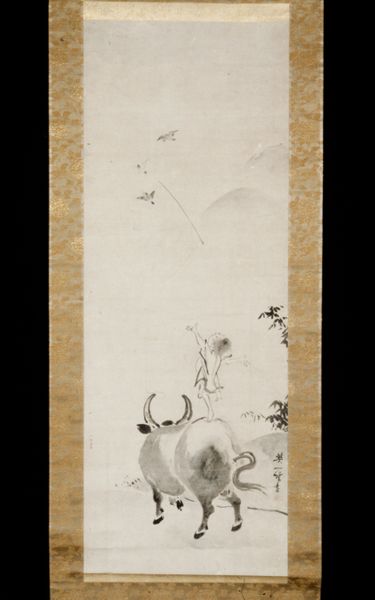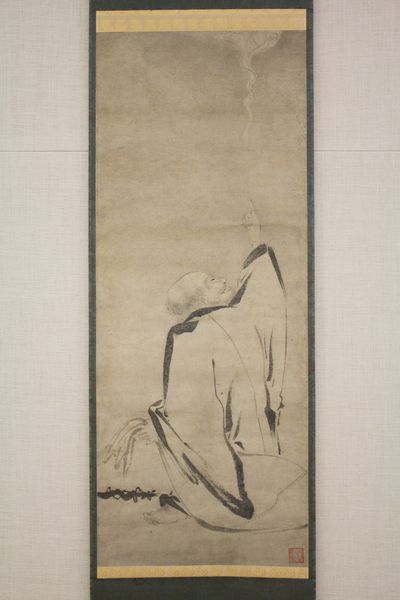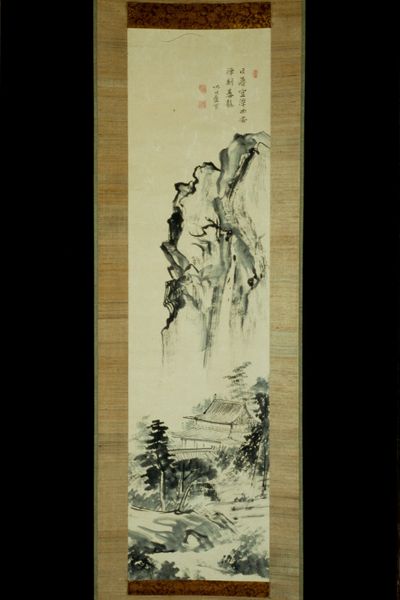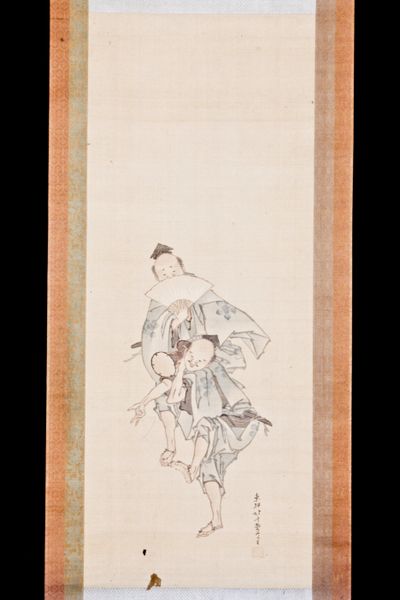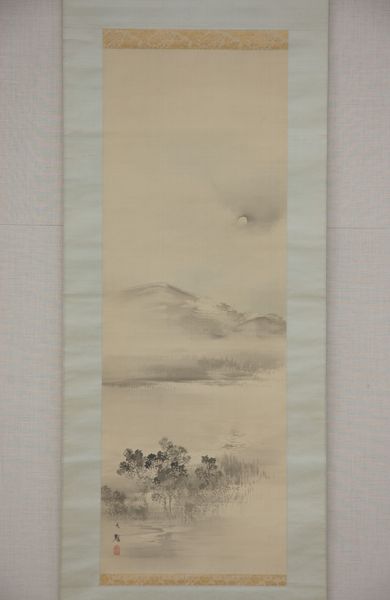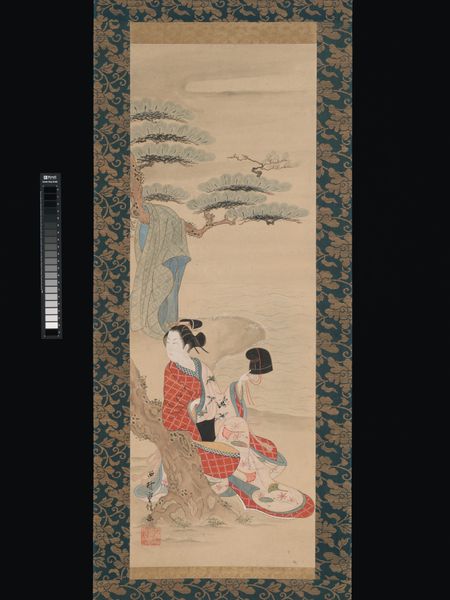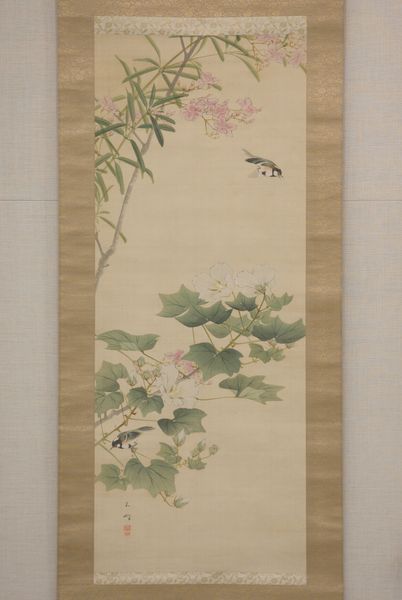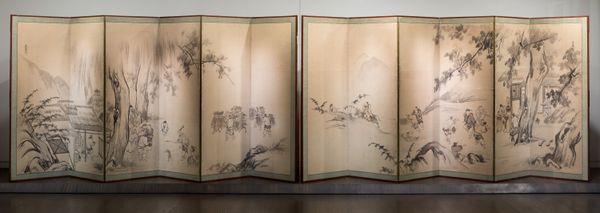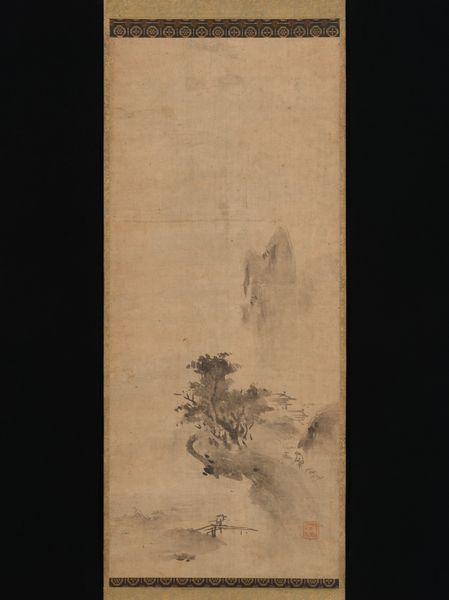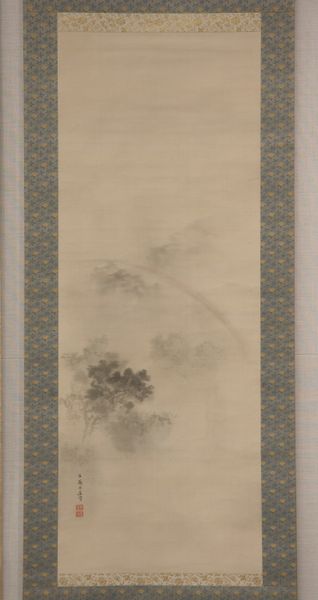
Fei Jiang-fang with a Crane Edo period, late 17th–early 18th century
0:00
0:00
drawing, watercolor, ink
#
drawing
#
water colours
#
asian-art
#
landscape
#
figuration
#
watercolor
#
ink
#
watercolor
Dimensions: Painting: 94.3 × 32.4 cm (37 1/8 × 12 3/4 in.); 177.8 × 42.6 cm (with mounting) (70 × 16 3/4 in.);177.8 × 46.7 cm (with knobs) (70 × 18 3/8 in.)
Copyright: Public Domain
Kano Tsunenobu painted “Fei Jiang-fang with a Crane” on silk, some time before his death in 1713. This hanging scroll reflects the Kano school's synthesis of Chinese painting styles with Japanese artistic traditions. The image depicts Fei Jiang-fang, a figure from Chinese folklore known for his ability to command cranes. The crane itself is a potent symbol in East Asian cultures, often associated with longevity and good fortune. The choice of subject matter and the delicate brushwork indicate this scroll probably catered to the tastes of the Japanese elite, who often sought to align themselves with classical learning and cultural refinement. Institutional histories are important here. The Kano school, to which Tsunenobu belonged, was patronized by the shogunate, so its artists had a role to play in supporting the existing social order. To fully understand the painting, we would need to delve into the cultural and political context of the Edo period, examining the social role of the Kano school and the elite's engagement with Chinese motifs. It's a reminder that meaning in art is always contingent on its historical and institutional setting.
Comments
No comments
Be the first to comment and join the conversation on the ultimate creative platform.
